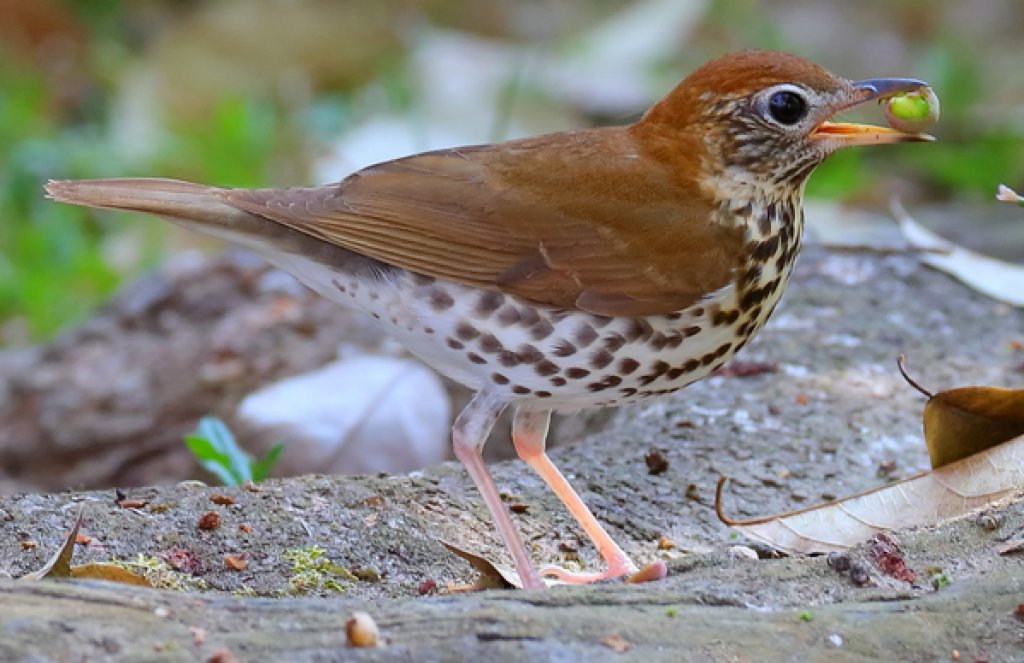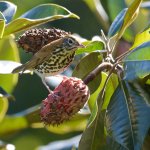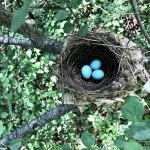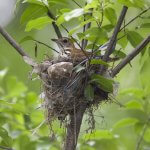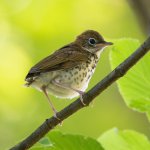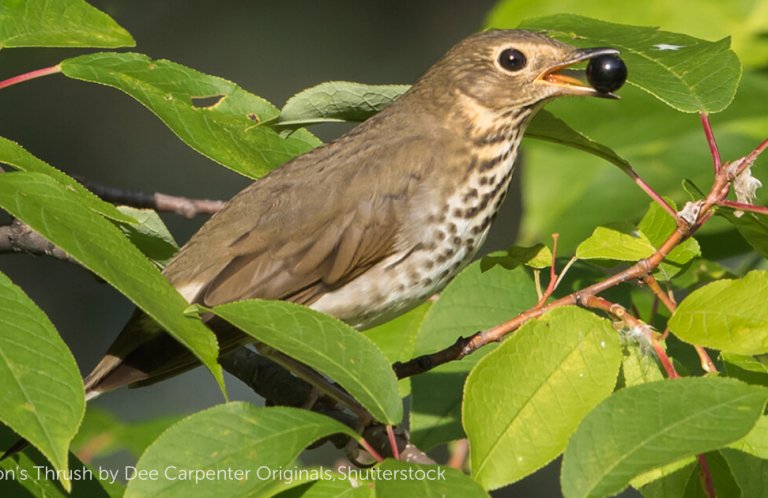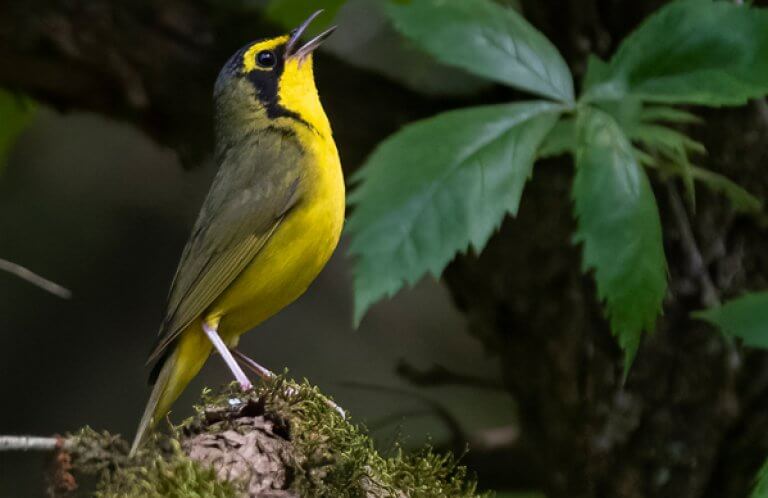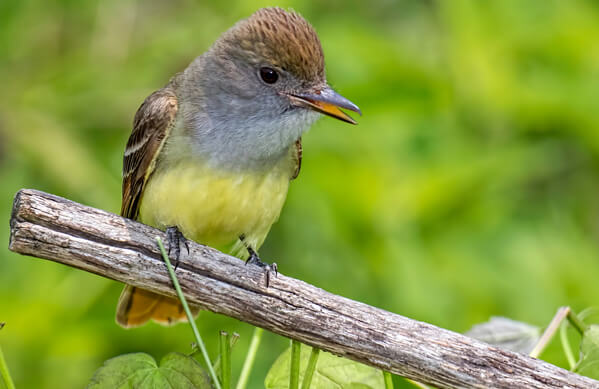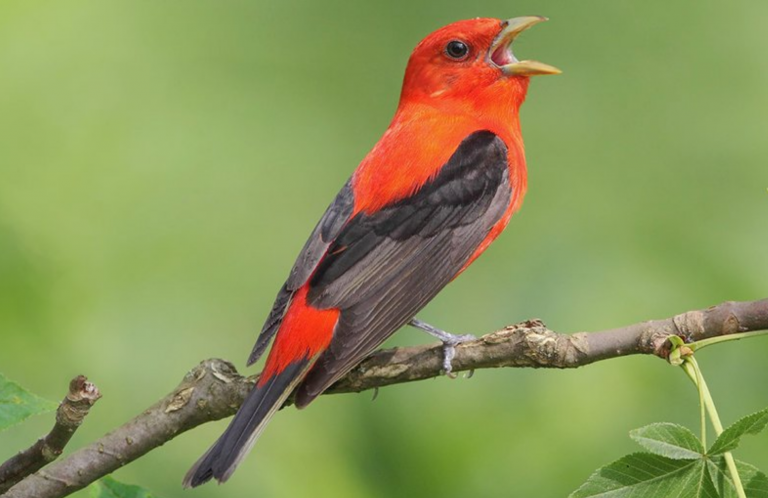About the Wood Thrush
The robust, long-legged Wood Thrush is closely related to the American Robin and thrushes of the genus Catharus, such as the Bicknell's Thrush and Swainson's Thrush. Its scientific name, Hylocichla mustelina, translates roughly as "weasel-colored woodland thrush," a reference to this bird's rich red-brown head, back, wings, and tail. A few of its more evocative folk names include Song Thrush, Swamp Angel, and Wood Robin.
Once a familiar summer sound throughout eastern U.S. forests, the Wood Thrush's haunting, flute-like song is sadly heard in fewer places these days.
Superlative Singer
Like all songbirds, Wood Thrushes have a Y-shaped voice box, called a syrinx. During his three-part song, a male Wood Thrush actually sings pairs of notes simultaneously, which harmonize and blend to produce ringing, ethereal tones.
The Wood Thrush's complex song begins with several low, almost inaudible notes, followed by the rising, flute-like ee-oh-lay, finishing with a complex trill. Each bird can sing unique versions of each song part, and one male Wood Thrush can easily sing more than 50 distinct songs!
Another commonly heard vocalization is a rapid pit-pit-pit call, given by both sexes. This series is heard year-round, including at dusk, as one of the last sounds these birds make before roosting.
Songs and Sounds
Listen to the Wood Thrush's haunting song here:
Call:
Breeding and Feeding
Of Pairs and Mixed Paternity
The male Wood Thrush arrives on the breeding grounds first, staking out a territory of up to several acres. The female arrives several days later, and the pair court in a series of circular flights and mutual feeding sessions.
The female chooses a nest site, usually in a young tree or shrub less than 20 feet above the ground. Like an American Robin, she incorporates a layer of mud into her cup-shaped nest. Interestingly, while the outside of the nest is usually made of dead grasses, some thrushes may add paper, cellophane, cloth, or other white materials. The contrasting color is thought to help to break up the nest's contour, making it less obvious to potential predators.
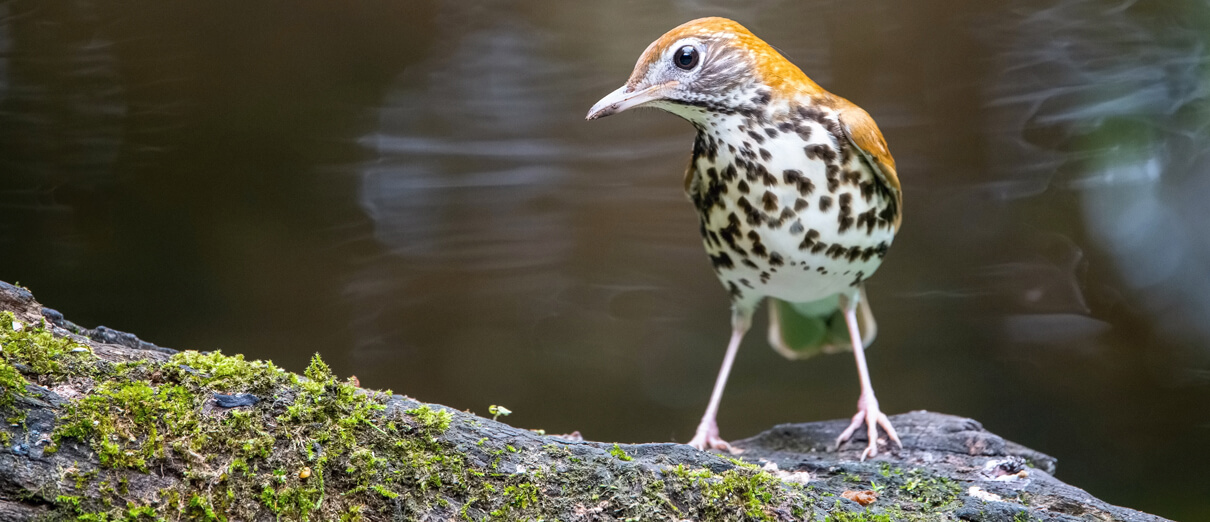
Wood Thrushes are seasonally monogamous, meaning a pair will stay together for the duration of one breeding cycle. However, extra-pair copulation is common, and up to 40 percent of a female's young may not be fathered by her mate! This breeding strategy likely promotes greater genetic diversity in the young.
Since the male Wood Thrush helps feed the young, the female has time to start a second nest and brood. Almost half of all mated pairs raise two broods, ranging in size from two to four chicks.
Feeding on the Forest Floor
Wood Thrushes forage on the forest floor, flipping over leaves in search of insects, snails, and sometimes small salamanders in the manner of a Kentucky Warbler or Spotted Towhee. They will also eat small fruits, including dogwood, holly, and Pokeweed berries, especially in the late summer and fall while building up fat to fuel their migratory treks.
Calcium-rich materials such as snail shells are particularly important to female Wood Thrushes, which need this mineral to successfully develop a clutch of eggs. Snails have declined in forested habitats due to the effects of acid rain, perhaps another driver of Wood Thrush population declines.
Region and Range
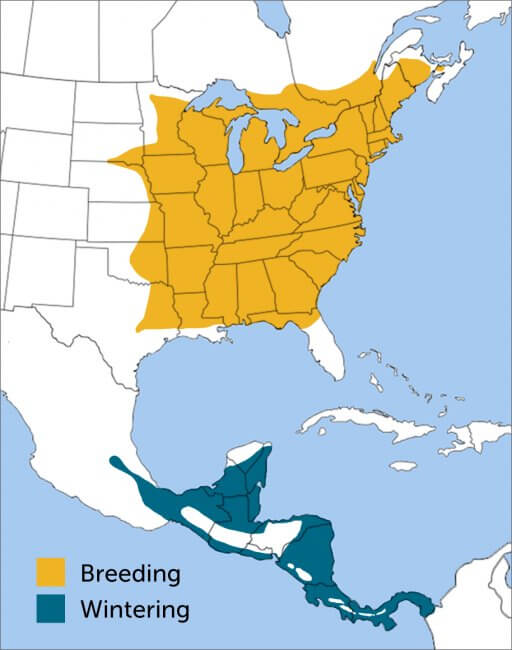
The Wood Thrush breeds in deciduous and mixed forests of eastern North America, from southern Canada to northern Florida, and from the Atlantic coast to the eastern Great Plains. Each fall, they migrate south to winter in Mexico and Central America, mainly in the humid lowland forests along the Atlantic and Pacific coasts. Like many migrant bird species including the Great Crested Flycatcher, Red-eyed Vireo, and Scarlet Tanager, the Wood Thrush crosses the Gulf of Mexico twice a year while during its migrations.
Conservation of the Wood Thrush
The destruction and fragmentation of forests are major factors in the Wood Thrush's decline. Partners in Flight placed this species on its Yellow Watch List of declining birds, noting a 60-percent drop in population between 1970 and 2014.
Although Wood Thrushes will nest in well-wooded suburban areas, they have reduced breeding success in smaller forest patches due to cowbird parasitism and nest predation from jays, crows, raccoons, and domestic cats.
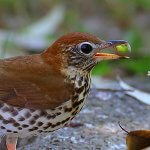
Help support ABC's conservation mission!
Like the Ruby-throated Hummingbird, the Wood Thrush sometimes winters on shade-grown coffee farms, which preserve some native trees and bird habitat among the coffee shrubs. One easy way to help the Wood Thrush is to buy Bird Friendly® coffee grown on certified farms within this bird's wintering range.
ABC works with partners throughout Latin America to promote bird-friendly agricultural practices and create protected bird reserves, with El Jaguar Reserve in Nicaragua and many other ABC-supported properties known to support wintering Wood Thrushes, along with Golden-winged Warblers and many other species.
Other ABC initiatives tackle threats affecting all migratory birds, including our Cats Indoors program, which encourages pet owners to keep cats and birds safe, and our Glass Collisions program, which offers solutions to keep migrating birds from hitting windows.
Get Involved
Policies enacted by the U.S. Congress and federal agencies, such as the U.S. Fish and Wildlife Service, have a huge impact on migratory birds. You can help shape these rules for the better by telling lawmakers to prioritize birds, bird habitat, and bird-friendly measures. To get started, visit ABC's Action Center.
Living a bird-friendly life can have an immediate impact on migratory birds in the United States. Doing so can be as easy as adding native plants to your garden, avoiding pesticides, and keeping cats indoors. To learn more, visit our Bird-Friendly Life page.
American Bird Conservancy and our Migratory Bird Joint Venture partners have improved conservation management on more than 8.5 million acres of U.S. bird habitat — an area larger than the state of Maryland — over the last ten years. That's not all: With the help of international partners, we've established a network of more than 100 areas of priority bird habitat across the Americas, helping to ensure that birds' needs are met during all stages of their lifecycles. These are monumental undertakings, requiring the support of many, and you can help by making a gift today.





































